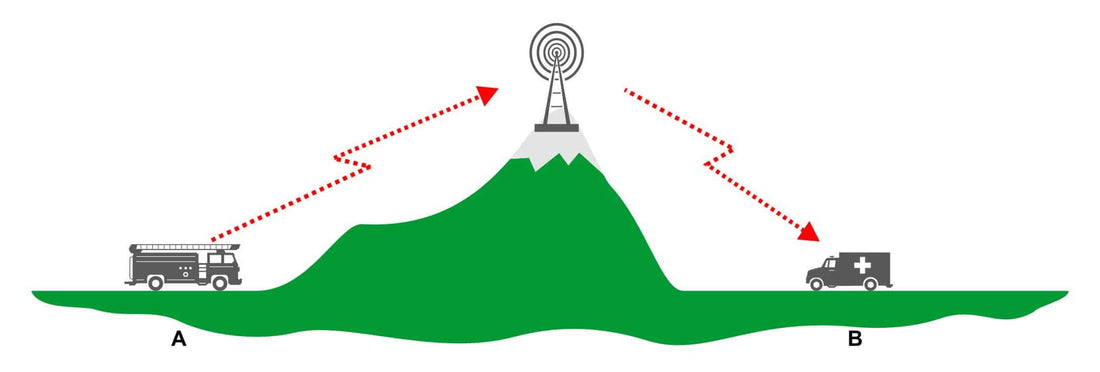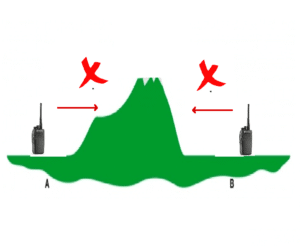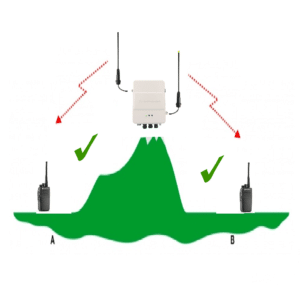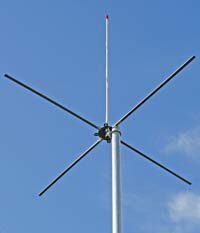
How Do Two Way Radio Repeaters Work?
Tegan HarrisThis page looks at how our Two Way Radio Repeaters work.
What Is a Radio Repeater?
In general, radio waves, whether digital or analog, travel in straight lines. This is known as 'line of sight'. They can go around and through some things, but even things like trees can affect the strength and clarity of the signal. This causes problems when you're operating a radio system in a built-up, hilly or mountainous off-road area. Sometimes, even on flatter terrain, the sheer distance between the transmitting radio and the receiving radio weakens the signal to an unacceptable quality, or the signal may be lost altogether.So how do two way radio systems work over greater distances, or when there isn’t a clear line of sight between the operators? Radio repeaters are the solution.

How Does a Radio Repeater Work
A Motorola Digital radio repeater simultaneously receives a radio signal and re-transmits it at a higher power so it can cover greater distances. This enables communication between radio users where obstructions, hills, trees, or distance are a problem.
Repeater stations usually have their antennas mounted high up on top of a tall building or hill above the trees etc. The positioning of the repeater is critical for good operation.
Carefully chose a location which is ideally central to your area that you are looking to cover, so their range is much greater. The boosted signal from a repeater can also improve the clarity of the transmission.

Repeaters receive radio waves on one frequency, called the “input” frequency, and then re-transmit the information on its “output” frequency. In the case of using two-way radios with a radio repeater service, operators typically program the radios to transmit on the repeater’s input frequency and receive on its output frequency. This configuration allows the radios to communicate effectively through the repeater, extending their range and coverage. Our experts can help you program that in to your radios.
Radio repeater systems are widely employed by commercial companies operating over expansive or densely populated regions. In addition to commercial companies, various other sectors and groups, such as emergency services, public transport, and amateur radio enthusiasts, also utilise radio repeater systems. Furthermore, they are used on large sites. Buildings such as a warehouse or hotels can be difficult to cover due to their structure.Motorola’s latest generation of digital repeaters uses the very latest technology and offer great performance. Both the DR3000 and the SLR100 are available in VHF or UHF.
For more information and expert advice about repeaters for mobile or portable radios.Installing a Radio Repeater
Installation of two-way radios can range from somewhat complex to incredibly easy, depending on the configuration. High-power repeaters usually require two antennas, one for receiving and one for transmitting. The typical repeater for shorter distances, however, requires only one repeater antenna, which transmits and receives to two-way radios, usually hand-held devices. These are relatively simple.

To make installation easier, some repeaters have what’s called a built-in or add-on duplexer. This allows the unit to transmit and receive on the same antenna at the same time. Essentially, the duplexer contains circuits that isolate the transmitter from the receiver. This way, the transmitters radio frequency doesn’t damage the receiver.
In UHF repeater setups, operators usually position a high-performance antenna at the highest point within the coverage area, regardless of whether they use one or two antennas. This placement allows for optimal performance and extends the range of the repeater. When strategically located at the most elevated point of a communication site, height greatly enhances the overall operation and performance of a repeater's signals. This placement minimises the length of antenna leads, as longer leads result in greater signal loss compared to the benefits gained from increased height. It is important to ensure that the antennas have a line-of-sight connection to all radio users, meaning there are no significant things blocking the direct path between the repeater's antennas and the users' radios.Repeater Site Survey
Before setting up a radio repeater, a site survey and radio coverage test are vital to its proper performance. This type of testing and level of planning becomes helpful as it saves time, money and resources. Investing in these practices on the front end can stop poor equipment performance. It can also eliminate ineffective communication later, and possibly when it matters most.
Conducting a radio coverage site survey and finding the right installation location is one of the most important steps in setting up a radio repeater. Positioning of the antenna is critical to the overall success of the radio communication. You will need to find a prime spot for the radio repeaters operation to be at its best.
Choosing a place for a radio repeater should be relatively easy. Line of sight is very important in radio communication. Trees, large hills and other dense structures or objects can impede signal transmission. That’s not to say you must have line of sight. Just know that if you don’t your range will be reduced.
Not sure if you need one of these? Contact Harris Race Radios experts on 64 21 682912 for free advice about getting the best signal on your two-way radio system.Sales Support
Call Aaron on +64 27 449 9654 or Rex +64 21 682 912 or get in touch via Facebook.
